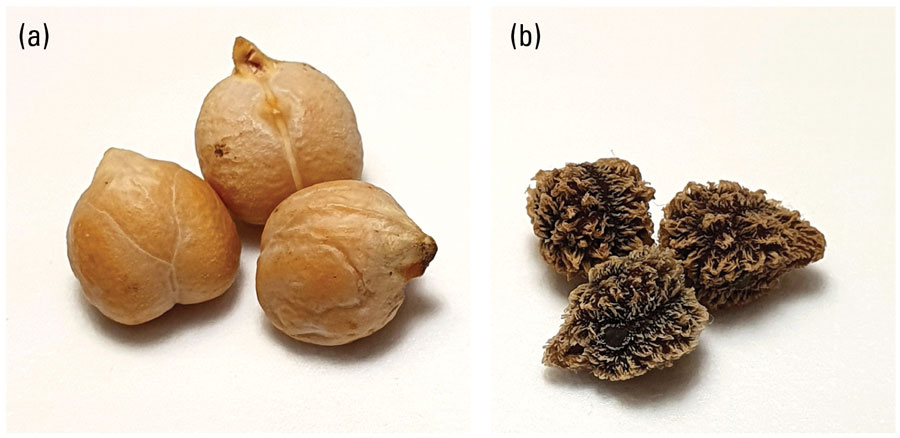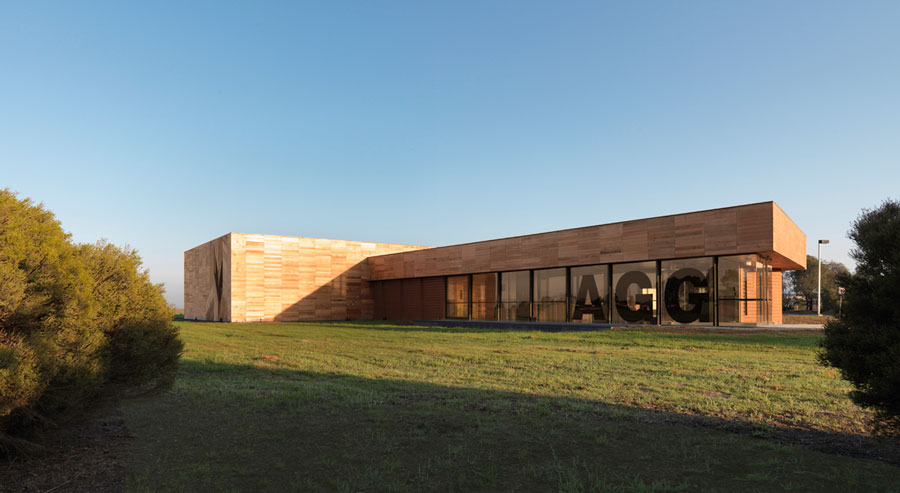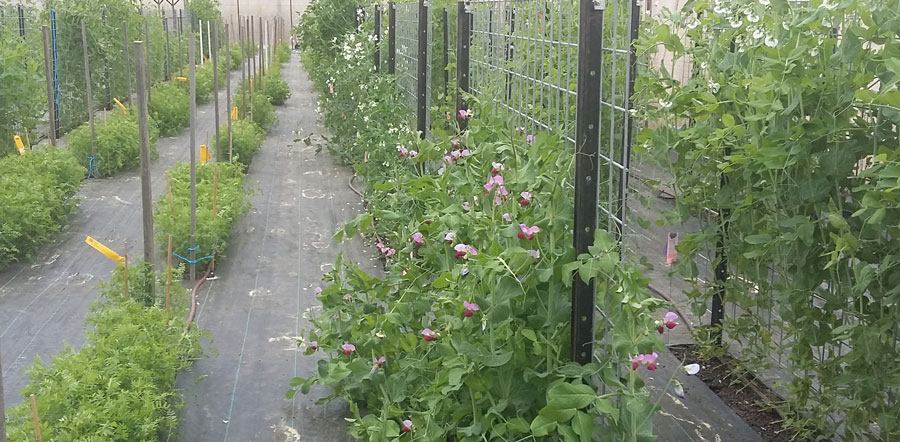Key points
- The Australian Grains Genebank (AGG) sources and conserves a diverse range of pulses with extensive trait variability
- AGG is part of an international network of genebanks that actively exchanges germplasm
- AGG distributes more than 25,000 lines each year from its collection to support research and development of new varieties for Australian growers
More than 90 per cent of the agricultural plants Australia depends on for food, feed and fibre are not native. As each of these agricultural species originates from a specific country or region, the species have to be sourced from their centres of origin. Australia relies on the global network of genebanks for access to germplasm critical to the development of new plant varieties to suit Australian growing conditions.
As part of this global network, GRDC invests in the Australian Grains Genebank (AGG), which plays a fundamental role in the development of new pulse crops for Australian growers by curating plant genetic resources.
Genetic resources
Plant genetic resources are defined as genetic materials of actual or potential value and describe the variability within plants that has come from human and natural selection over millennia - they are essential as sources of disease resistance, tolerance to abiotic stresses, improving quality attributes, adapting to unpredictable environmental changes, yield improvement and future human needs.
These valuable genetic resources are protected so they are not lost due to natural disaster or human activities through in-situ (in their natural environment) and/or ex-situ (outside their natural environment) conservation in genebanks. Ex-situ conservation allows easy access to genetic resources, or germplasm, without stressing natural populations through multiple tissue or seed harvests that could cause harm, decline or extinction.
The AGG has the mandate to import, conserve and distribute new germplasm containing priority traits for the Australian pulse industry. This includes sourcing cultivars and landraces (or village varieties) that are locally adapted to specific villages or regions, elite breeding materials and the wild relatives or cousins of cultivated crops.
The wide diversity of germplasm shares enough genetic similarity that they can be successfully utilised within a crop, although they can look extremely different on the surface (see Figure 1). This broad range of germplasm ensures that the full diversity of traits for tolerances to biotic and abiotic stresses is available for researchers and breeders to develop new pulse varieties that improve production under our changing seasonal conditions.
Figure 1: (a) Cultivated chickpea seed and (b) wild chickpea relative.

Source: AGG.
AGG and new pulse varieties
The development of new pulse varieties involves a considerable amount of time, resources and many individuals throughout the research and breeding pipeline. The outcomes are more resilient, yield-stable pulse varieties that Australian growers can plant under seasonally variable pest, disease and growing conditions.
The process involves plant breeders and researchers with expertise in genomics, phenomics, pathology, entomology, agronomy, soil science, biometry/statistical analysis, grain quality, genetic resources and much more. The expertise used to breed new pulse varieties relies on identifying, testing and recombining beneficial agricultural traits from a wide diversity of genetic resources.
Research and breeding programs investigate germplasm from the AGG for specific characteristics that can confer tolerance or resistance to a range of limiting factors including pest, disease, environmental and climatic constraints.
These programs look at pest and disease interactions to identify resistance genes in germplasm, grain attributes including protein and starch content, seed size and shape, and hydration - all affecting end use and cooking quality. It could be research teams looking for germplasm that is highly adaptable to a range of temperature and water extremes such as cold, frost, heat, drought and waterlogging, or soil constraints such as acidity, mineral toxicities, salinity or sodicity.
Some recent examples of AGG germplasm use by Australian research and breeding programs has identified germplasm with tolerances or resistances to a range of biotic and abiotic stresses. The AGG distributes more than 25,000 germplasm samples each year to support the research and breeding of grain crops in Australia including chickpea, faba or broad bean, field pea, lentil, lupin and mungbean. But what do we mean by supporting research and breeding, and how does this relate to the real world for pulse growers?

The Australian Grains Genebank in Horsham, Victoria, distributes more than 25,000 lines each year from its collection to support research and development of new varieties for Australian growers. Photo: AGG.
Chickpea
With GRDC investment, over the past five years new wild-relative chickpea species were collected from Turkey through a collecting mission with Dr Jens Berger of CSIRO and the University of California. These new wild chickpea collections were imported by the AGG and provided to pre-breeding research programs.
Tolerance has been identified in this germplasm for traits such as chilling during the reproductive stage (University of Western Australia), which is the biggest abiotic production constraint for chickpeas in Australia. The germplasm also showed potential tolerance to acid soil (identified by Murdoch University), Ascochyta blight (Curtin University of Technology) and root lesion nematodes (University of Southern Queensland).
A University of Western Australia program led by Dr Janine Croser developed a rapid plant growth system that enabled the wild chickpeas to flower in a quarter of the time compared with in the wild, which will underpin the rapid transfer of these identified tolerance genes into an elite Australian chickpea variety background. AGG made some of the new hybrid populations available in time for the 2020 sowing season for researchers and breeding programs to use in evaluation and selection.
Lentil
As Australia relies on introduced plants for most of its food, feed and fibre, having an active germplasm bank based in our country and linked with a network of international banks is essential for pulse variety development.
Lentil pre-breeding research led by Agriculture Victoria has used breeding lines and landrace germplasm imported from the International Center for Agricultural Research in the Dry Areas (ICARDA) with high probabilities of tolerance to a range of biotic and abiotic traits.
Agriculture Victoria's Dr Arun Shunmugam reported that germplasm had been screened for a range of tolerance traits including heat and frost, waterlogging, acid soil, Ascochyta blight and Botrytis grey mould, and agronomic suitability to Australian growing conditions. Germplasm with potential boron, salt, disease and herbicide tolerances has been progressed into the national lentil breeding and crossing pipeline.
Pea
A range of pea germplasm has been sourced from the AGG to screen for biotic and abiotic traits such as frost tolerance, pest and disease resistance, plant architecture and vigour. University of Western Australia scientists have successfully transferred pea weevil resistance from a wild pea species into cultivated pea breeding lines.
Agriculture Victoria pea breeder Dr Babu Pandey has reported that AGG lines have been used as parents for salt tolerance, plant architecture and early vigour in their breeding program, with the derived lines under assessment for further development for these and other traits.

The AGG germplasm is used to identify tolerances or resistances to a range of biotic and abiotic stresses. Photo: AGG.
For all of these examples, there is collaboration across programs involving phenotyping to assess the response of germplasm to specific stresses, genotyping to identify the specific genes and diversity, as well as between plant scientists and breeders to develop new breeding lines incorporating the best combination of beneficial traits.
All of this information enables research and breeding programs to develop new hybrid lines through crossing, with the best-performing progeny then progressing through the breeding pipeline.
The ultimate output of the AGG is realised through breeding programs, whether public or private, creating a new pulse variety that is more adaptable and resilient to Australian growing conditions and hence more productive and profitable for Australian pulse growers.
More information: Dr Sally Norton, 03 4344 3111, sally.norton@agriculture.vic.gov.au

























































